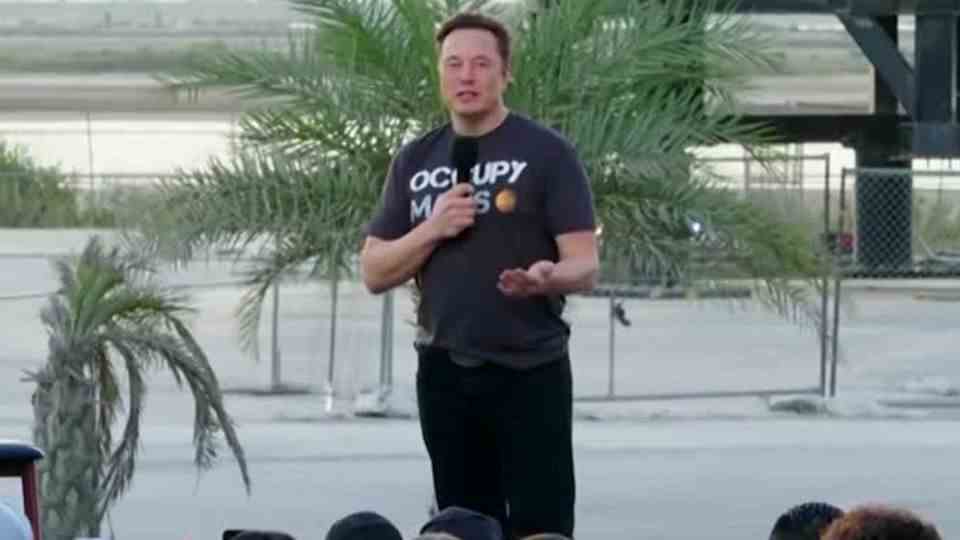Starlink for smartphones
Never again without reception: How Elon Musk and T-Mobile want to eliminate the dead zone worldwide
Elon Musk still has a lot planned for his satellite start-up Starlink
© Patrick Pleul / Getty Images
Elon Musk’s Starlink satellite network keeps making headlines. Now it should solve an age-old mobile phone problem.
No reception – even in the mobile phone era, the message was a nuisance, but since the smartphone and the omnipresence of the Internet, it has become a disaster. And the problem of dead spots is even greater in a large country like the USA than in Germany. The US provider T-Mobile now wants to close its gaps with the help of Elon Musk – and make the radio gap a thing of the past worldwide.
This was announced by T-Mobile CEO Mike Sievert and Starlink boss Elon Musk yesterday at a joint event. The plan: Musk’s satellite Internet should also be able to be used by mobile customers. In this way, remote regions should also be provided with a connection and dead spots closed, the two announced.

Starlink: From the satellite straight to your smartphone
This should be made possible by revising the satellites, Musk explained. Version 2 would have “big, big antennas”, between five and six meters in diameter. These should make it possible to use the frequencies on which T-Mobile smartphones also transmit from orbit. According to him, the first of the new satellites are to be launched into space next year. They will “eliminate dead spots around the world,” he explained full-bodied.
Of course, at the level of a modern 5G connection, the connection does not move due to the distance between the device and the satellite, Musk admitted. “The connection is two to four Mbit/s per cell,” he explained. That’s a far cry from the 1000+ Mbps possible today and more in line with older HSPA connections (a later variant of 3G). But it’s enough for chatting, calling and websites, Musk promises. “And if there aren’t too many people in a cell, maybe even for a bit of video.”
emergency solution
The main idea, however, is less about wasting the network made available in this way for Instagram and Co. Instead, one thinks more of people who are stranded without reception due to an accident. “And now talk to a basketball,” Musk jokes, referring to the classic film “On the Lost” with Tom Hanks. “They can now call for help,” he elaborates on the idea.
In order for the connection to be reliable, it is therefore not available for all services. It is initially limited to selected messenger apps and services. In addition, it is only available when there is really no reception, Musk clarified. This does not require access to the complete satellite network. As soon as even a basic connection was established, messages could be sent. Even if, in extreme cases, they would need up to 30 minutes to send.
Another company also benefits directly from the use of satellites: the cars of Musk’s other company Tesla should also be able to use the technology for communication, he announced on Twitter. You could receive navigation and traffic data about it. So far, they have relied on T-Mobile’s competitor AT&T for this.
The way to space
A first test is to begin this year in “selected” areas, and next year the service is to be offered throughout the United States, including Hawaii and Alaska. Internationally, the situation is a little trickier. The commercial frequencies used by the project are licensed in other countries by local providers. T-Mobile is therefore already in negotiations in order to be able to implement the service internationally.
The fact that smartphones can connect directly to satellites is not a completely new idea. Garmin already offers this for navigation devices. According to rumours, the two most important manufacturers, Apple and Samsung, are planning to technically equip their premium smartphones for full satellite connections in the future. Then a service like the one now presented would no longer be necessary. However, T-Mobile customers should have one big advantage: Sievert promised that the upcoming satellite solution would be included in the company’s “most popular” tariffs free of charge.



